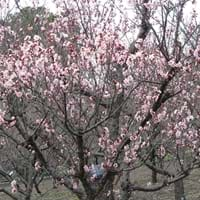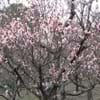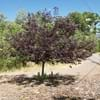Life Span
Perennial
Perennial
Type
Tree
Bulb or Corm or Tuber
Origin
China, Korea
Southern Africa, South Africa
Types
Not Available
Cusick's camas, large camas
Number of Varieties
Not Available
Habitat
All sorts of environments, Fertile bottom land, Well Drained
meadows, moist forests, Open Plains
USDA Hardiness Zone
6-9
8-10
AHS Heat Zone
12-6
Not Available
Sunset Zone
3a, 3b, 4, 5, 6, 7, 8, 9, 12, 13, 14, 15, 16, 17, 18, 19, 20, 21, 22
21,22
Habit
Oval or Rounded
Rosette/Stemless
Flower Color
White, Pink, Rose
White, Yellow, Red, Blue, Purple, Pink, Lavender, Violet
Flower Color Modifier
Bicolor
Bicolor
Fruit Color
Yellow
Not Available
Leaf Color in Spring
Green
Green
Leaf Color in Summer
Green
Light Green
Leaf Color in Fall
Yellow, Light Yellow, Yellow green
Several shades of Green
Leaf Color in Winter
Not Available
Light Green
Leaf Shape
Aristate
Long slender
Plant Season
Spring, Winter
Spring, Winter
Sunlight
Full Sun, Partial Sun
Full Sun, Partial Sun
Type of Soil
Clay, Loam
Loam
The pH of Soil
Acidic, Neutral
Acidic, Neutral
Soil Drainage
Well drained
Well drained
Bloom Time
Early Spring, Early Winter, Winter, Late Winter
Early Spring, Spring, Late Winter, Indeterminate
Tolerances
Not Available
Black Walnut Toxicity, Rabbit, Shade areas
Where to Plant?
Ground
Container, Ground, Pot
How to Plant?
Budding, Seedlings
chipping, Offsets, scooping, Twin scaling, Vegetative
Plant Maintenance
Medium
Low
Watering Requirements
Average Water Needs, Does not require lot of watering, Water more frequently during periods of extreme drought
Medium
In Summer
Lots of watering
Lots of watering
In Spring
Moderate
Moderate
In Winter
Average Water
Average Water
Soil pH
Acidic, Neutral
Acidic, Neutral
Soil Type
Clay, Loam
Loam
Soil Drainage Capacity
Well drained
Well drained
Sun Exposure
Full Sun, Partial Sun
Full Sun, Partial Sun
Pruning
Remove damaged leaves, Remove dead branches, Remove dead leaves
Remove damaged leaves, Remove dead branches, Remove dead leaves
Fertilizers
All-Purpose Liquid Fertilizer, Apply N-P-K, fertilize in growing season
All-Purpose Liquid Fertilizer, General garden fertilizer, Time release fertilizer
Pests and Diseases
Pests and diseases free, Red blotch
Pests and diseases free
Plant Tolerance
Drought, Full Sun
Black Walnut Toxicity, Rabbit, Shade areas
Flower Petal Number
Single
Single, Double, Semi-Double
Foliage Texture
Medium
Medium
Foliage Sheen
Not Available
Glossy
Allergy
Not Available
Asthma
Aesthetic Uses
Not Used For Aesthetic Purpose
Bouquets, Cottage Garden
Beauty Benefits
Not Available
For treating wrinkles, Remove blemishes, Skin Problems
Edible Uses
Yes
Sometimes
Environmental Uses
Air purification
Air purification, Forms dense stands, Very little waste
Medicinal Uses
antimicrobial, Gastrointestinal disorders, Ulcers
Leucoderma, Urinary problems
Part of Plant Used
Flowers, Fruits
Bulbs, Root
Other Uses
Sauces, Sometimes used for making wine
Animal Feed, Decoration Purposes, Showy Purposes
Used As Indoor Plant
No
Yes
Used As Outdoor Plant
Yes
Yes
Garden Design
Feature Plant, Fruit / Fruit Tree, Shade Trees, Street Trees
Bedding Plant, Container, Cutflower, Mixed Border, Rock Garden / Wall
Botanical Name
PRUNUS mume
Hyacinthus orientalis
Common Name
Japanese Apricot
Hyacinth, common hyacinth, garden hyacinth, dutch hyacinth
In Hindi
जापानी खुबानी
ह्यचीन्थ
In German
japanische Aprikose
Hyazinthe
In French
abricot japonais
jacinthe
In Spanish
albaricoque japonés
jacinto
In Greek
Ιαπωνικά Βερίκοκο
υάκινθος
In Portuguese
Apricot japonês
jacinto
In Polish
japońska morela
hiacynt
In Latin
Persicum Italica
et hyacinthinas,
Phylum
Tracheophyta
Magnoliophyta
Class
Magnoliopsida
Liliopsida
Family
Rosaceae
Liliaceae
Clade
Angiosperms, Eudicots, Rosids
Angiosperms, Monocots
Tribe
Not Available
Not Available
Subfamily
Not Available
Scilloideae
Number of Species
Not Available
Season and Care of Japanese Apricot and Wild Hyacinth
Season and care of Japanese Apricot and Wild Hyacinth is important to know. While considering everything about Japanese Apricot and Wild Hyacinth Care, growing season is an essential factor. Japanese Apricot season is Spring and Winter and Wild Hyacinth season is Spring and Winter. The type of soil for Japanese Apricot is Clay, Loam and for Wild Hyacinth is Loam while the PH of soil for Japanese Apricot is Acidic, Neutral and for Wild Hyacinth is Acidic, Neutral.
Japanese Apricot and Wild Hyacinth Physical Information
Japanese Apricot and Wild Hyacinth physical information is very important for comparison. Japanese Apricot height is 550.00 cm and width 550.00 cm whereas Wild Hyacinth height is 10.20 cm and width 5.10 cm. The color specification of Japanese Apricot and Wild Hyacinth are as follows:
Japanese Apricot flower color: White, Pink and Rose
Japanese Apricot leaf color: Green
Wild Hyacinth flower color: White, Yellow, Red, Blue, Purple, Pink, Lavender and Violet
- Wild Hyacinth leaf color: Green
Care of Japanese Apricot and Wild Hyacinth
Care of Japanese Apricot and Wild Hyacinth include pruning, fertilizers, watering etc. Japanese Apricot pruning is done Remove damaged leaves, Remove dead branches and Remove dead leaves and Wild Hyacinth pruning is done Remove damaged leaves, Remove dead branches and Remove dead leaves. In summer Japanese Apricot needs Lots of watering and in winter, it needs Average Water. Whereas, in summer Wild Hyacinth needs Lots of watering and in winter, it needs Average Water.





